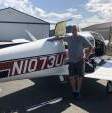Mooney down in Washington state
-
Members Online
- Niko182
- RoundTwo
- Fritz1
- Jcmtl
- 47U
- CAV Ice
- PeterRus
- PeteMc
- jmbaute
- AndreiC
- Ibra
- DanM20C
- Stubby
- eman1200
- jlunseth
- Shadrach
- M20S Driver
- acekng1
- Parker_Woodruff
- N201MKTurbo
- hammdo
- Aerodon
- Sherifferic
- atpdave
- redbaron1982
- warbingtonmasonry
- 7.Mooney.Driver.0
- LOCOLJ
- kowabunga
- WilliamR
- OR75
- Bonanza flyer
- 201er
- KSMooniac
- WBASC
- Aviationist
- Speed Merchant
- rahill
- 802flyer
- dzeleski
- Bolter


Recommended Posts
Join the conversation
You can post now and register later. If you have an account, sign in now to post with your account.